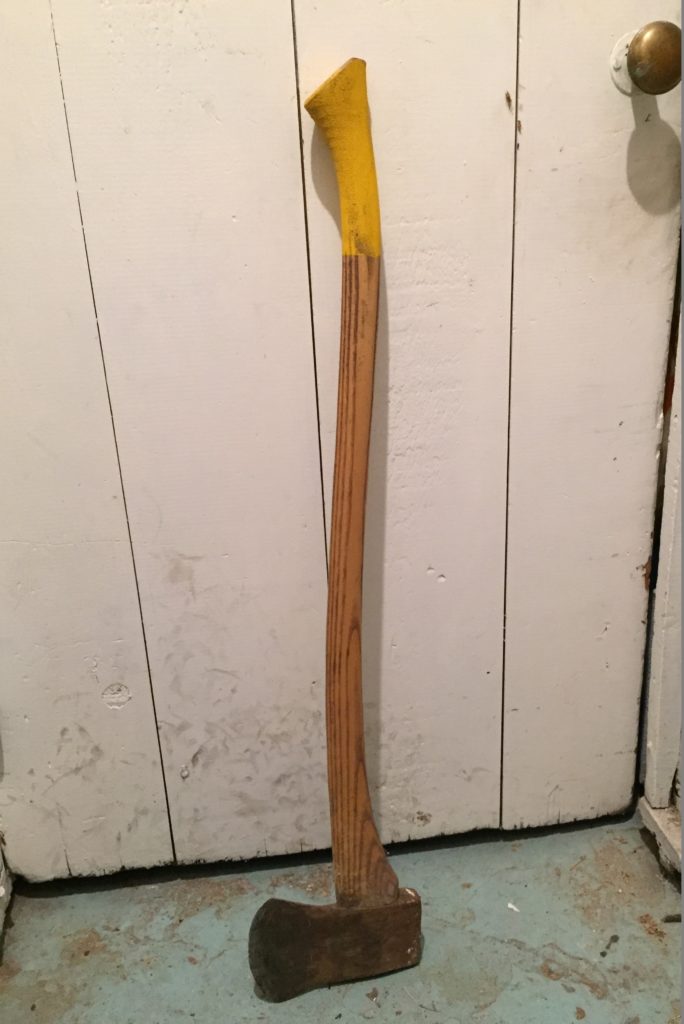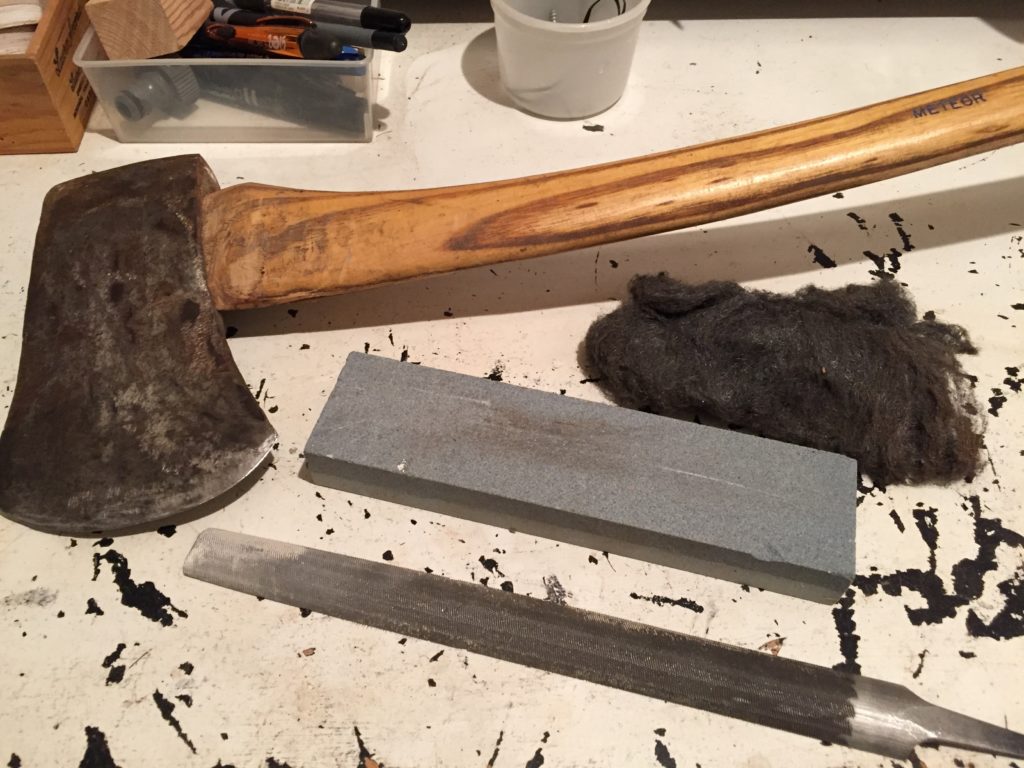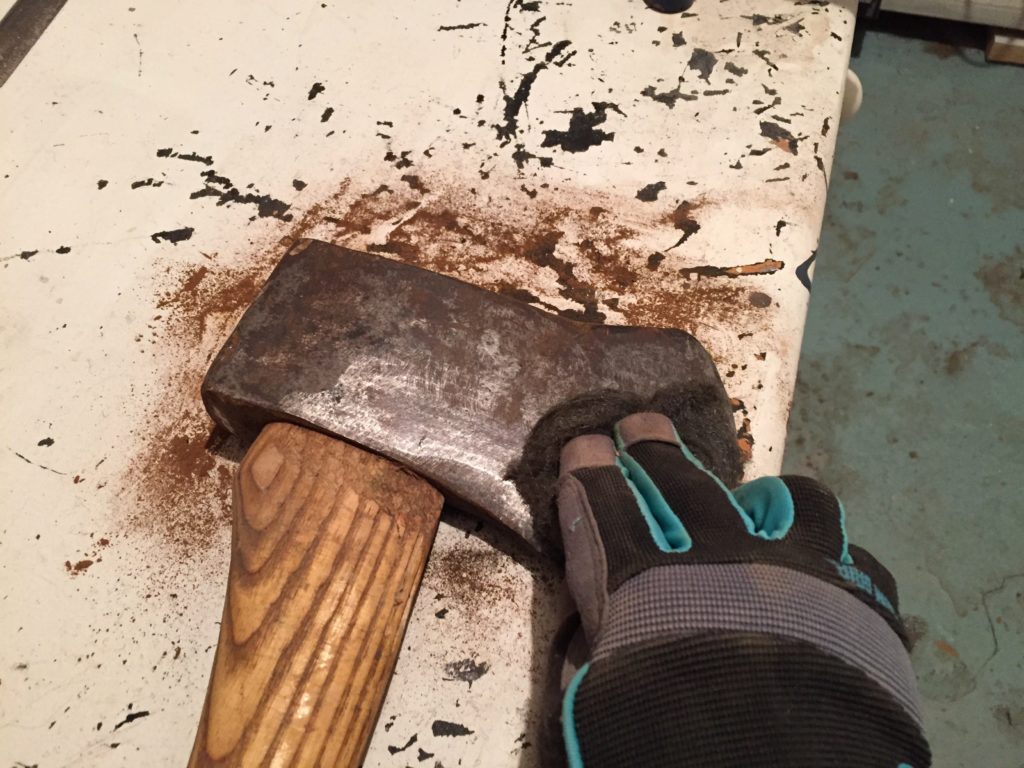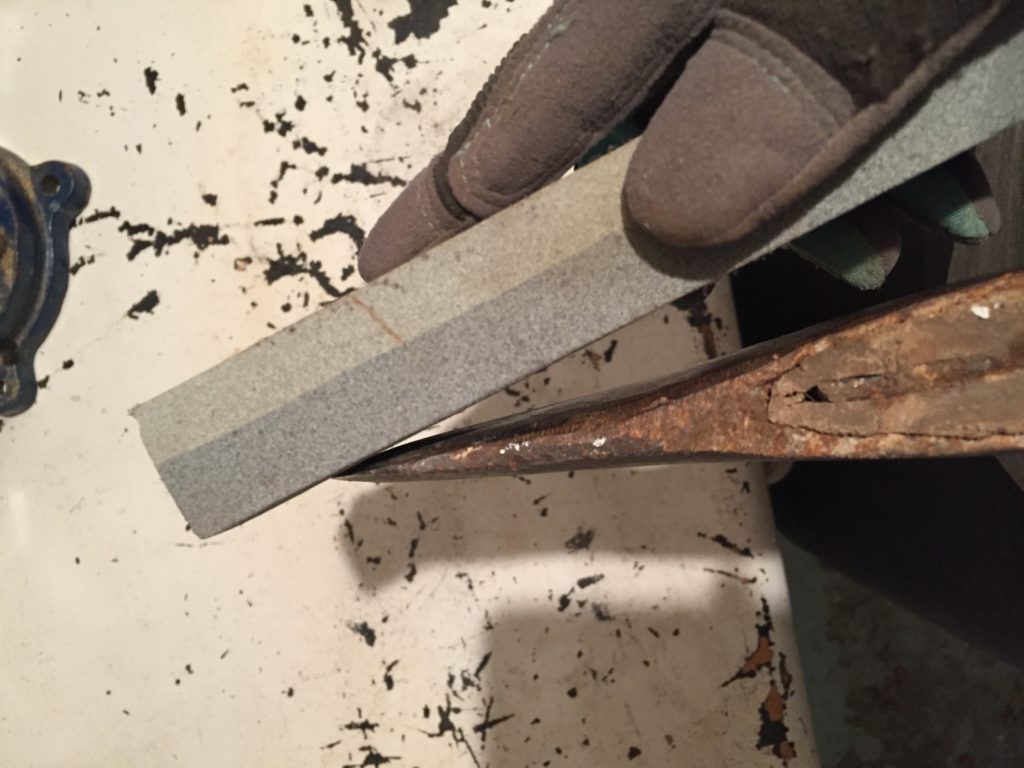
With wood burning season upon us, I decided it was time to start chopping wood in order to cut some bigger logs into smaller kindle. I inherited of this rusty old axe, so I thought I’d give it a try. After doubting my axe swinging skills for a minute, I realized that even the mightiest of lumberjacks could not cut a log with this dull chipped axe. Here’s what I learned about how to sharpen an axe.
Here’s What You’ll Need:
- Bastard file
- Honing stone
- Honing oil
- Steel wool
- Leather strop (optional)

You can go crazy and fully restore the axe, making it all shinny and new again, but I just focused on functionality. You want an axe that can make an almost effortless clean cut.
Clean off any rust with steel wool

If you have a lot of rust accumulated on the blade, it’s a good time to scrub it off using some sandpaper or steel wool. Rub vigorously in a circular motion until the blade is clean from rust.
File the edges in a fan like steady motion

Start by clamping the axe in a vice with the blade facing upwards. This will help you keep a constant angle when filing and free up both hands.
Pay close attention to the bevel of the axe. It is likely you axe’s bevel is still discernible, despite its wear. If not, decide on your axe’s shape before you begin sharpening, and keep a close watch on the edge as it begins to develop.
File the axe using a straight upward stroke, moving the bastard file from the bottom upwards. Move along the edge with a continuous upward stroking motion, with both hands on the file, creating a fan-shaped curve on the blade. Use firm strokes and make sure to follow your axe’s bevel. Alternate sides regularly until you are satisfied with the beveled edge.
Tip: Wear thick leather gloves when filing or honing an axe to protect your hands.
Hone the edges
Next, grab your honing stone, also known as a whetstone. A whetstone typically has two sides. A darker side and lighter side. The dark side is coarse, made for rough grinding and to return edges to their original shape. The lighter side is fine, made for finishing, smoothing and polishing cutting edges.

Start with the darker, coarse side of the stone
For best results, apply a bit a honing oil to the blade’s edge. Following the blade’s bevel, rub the honing stone in a circular motion, moving along the blade’s edge from one end to the other. It is easiest to do this by holding the axe in front of you and staring down the blade’s edge from above. You will notice a burr begin to form on the edge. Continue to hone both sides alternately to move the burr from one side to the other, until it is almost gone.
Polish with the lighter, fine side of the honing stone
Apply more honing oil as needed to the blade. Continue to rub the blade in a circular motion, this time using the fine side of the stone. Continue until the feathered edge is completely gone. After all your hard work, you should be left with a razor sharp blade, that will make you feel like you just might be a lumberjack after all.

If you want to take it a step further, you can finish off with a leather strop, but the axe will work just fine without this step.
